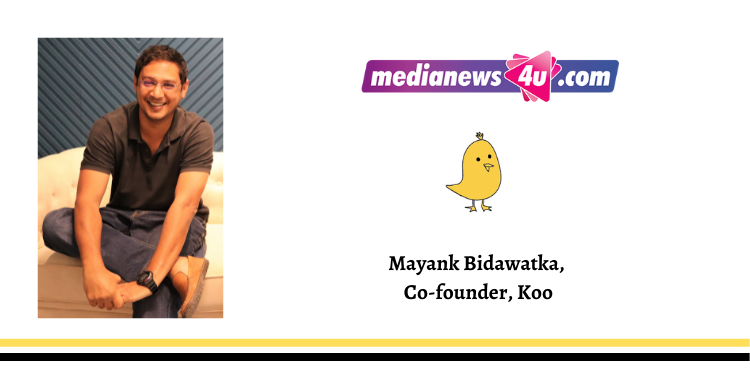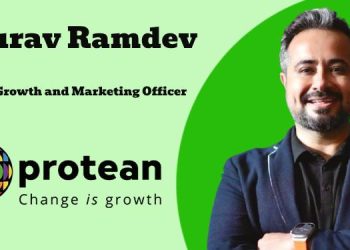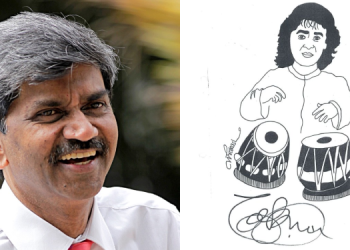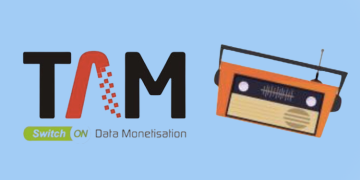Koo was launched in March 2020 and in August 2020 the App won Prime Minister’s Aatma Nirbhar Bharat App Innovation Challenge. The microblogging site is co-founded by entrepreneurs Aprameya Radhakrishna and Mayank Bidwatka.
Koo is a micro-blog in Indian languages to help Indians express themselves in the easiest way possible with the objective of democratizing their voice. Share your thoughts in text, audio, or video. Some of the most prominent faces of India use Koo. There are millions of others from all walks of life. Koo is home to the Voices of India. Follow people you like, know what’s on their mind and share your thoughts with India too.
In an exclusive chat with Medianews4U Mayank Bidawatka, Co-founder, Koo spoke to us on the launch of an Indian App and more…
Congratulations on a great app. Why did you want to start a Microblogging site similar to Twitter?
Actually, a good part of our company has been focused on the vernacular medium invasion and that was a huge opportunity as 90% of the country does not speak English, and we are the only country in the world that has huge language diversity. The United States of America or Australia, China are all large countries, and only one language binds them. We are the only country with many languages and an equal number of dialects and it is a very unique country in that sense. Now, a lot of these vernaculars were not online before the Jio revolution and that actually changed everything.

Suddenly you have a lot of people talking in Indian languages, coming on to the Internet, and there is not enough content in their mother tongue. We started ’Vokal’, which is a question-and-answer platform where they can ask questions in vernacular languages, and then we connect them to an expert who will answer that question in their mother tongue. It is something like Quora, this is a core human need across the world. I have a question and I want an answer, I want to say something and someone should listen, I want to read something or all I want to do is to search for something. So these are the core needs, also people want to connect with friends. Now, we just have to make this available in Indian languages. Quora is not big on Indian languages, we noticed the same thing with Twitter and a lot of our creators came back and told us I want to express in my mother tongue what I don’t how to do it.
We went and studied how it works, microblogging is a very good format for people to create. It is also a very good format for people to read because it is a short crisp thought. As Koo we are not the first innovator of microblogging, Google was not the innovator of search, Facebook was not the innovator for connecting with friends, but what these companies have done, and they’ve created a better product and then went about Indianising the solution.
That is the difference that you have a microblog in the world, but it doesn’t work for India, now you have one which is Indianised, and that it works for India and that is what our company is trying to do. For example, your website is not the first one in the world that covers media news and marketing. Yes, but you have readers, why? The website is catering to a particular segment in a particular fashion with a particular content. The reason for the existence of products is to Indianise it and the broader part of India can participate in this Internet revolution. For someone who’s only talking Bangla or Bhojpuri or Kannada does not find the internet very meaningful. Indian entrepreneurs must step up and do something for that audience so they also benefit the way the English audiences like you and me benefit from the Internet. That was the broad thought process and why we started Koo.
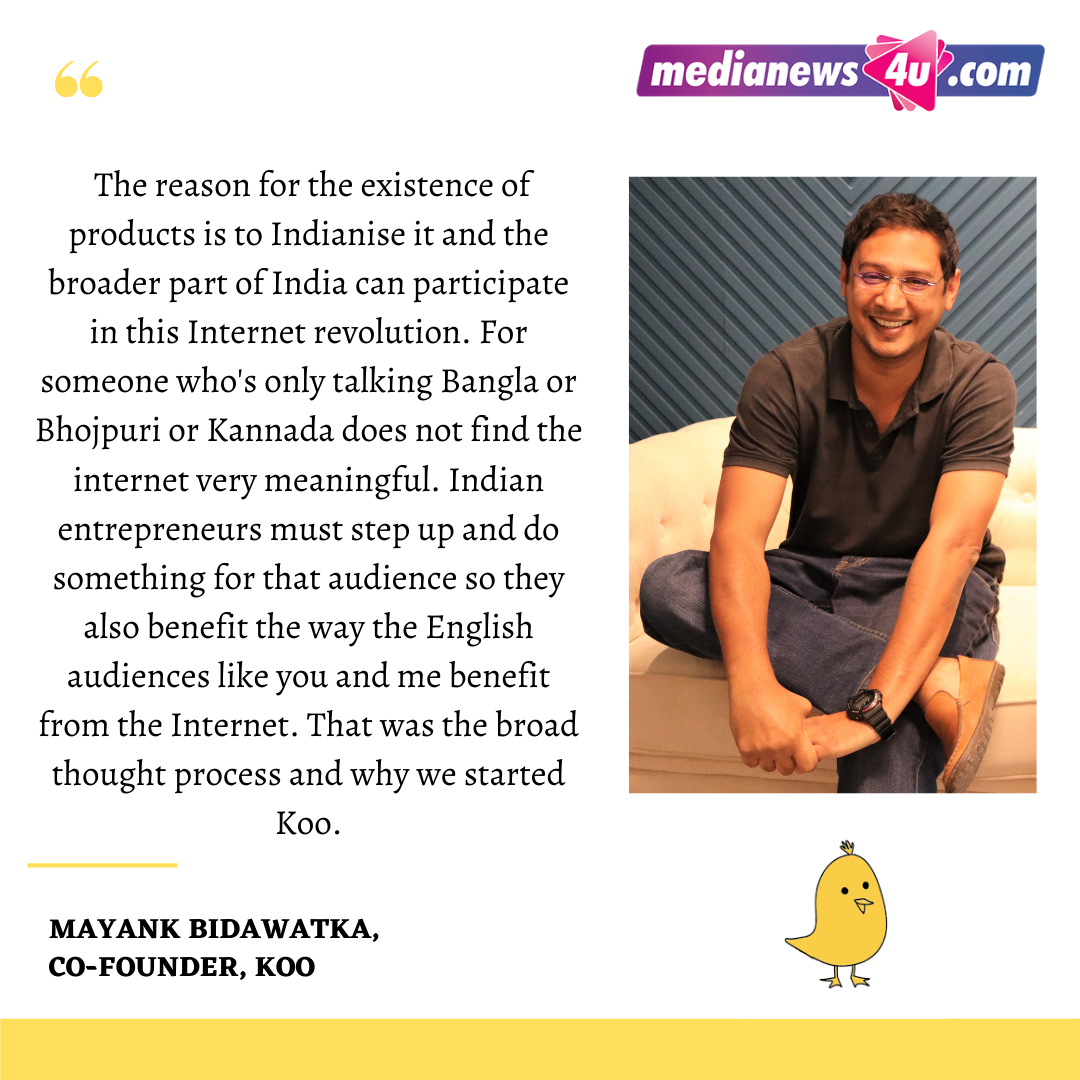
When you were developing this app, what were the kind of challenges you faced?
Actually no challenges, it was quite a simple thing to develop. What we were doing was to keep learning about what works, what doesn’t work, and that was our journey. You have to keep experimenting on what products are working, how to Indianise it more. What colors should we use etc? These were the questions we asked ourselves, this was not a challenge as we have been entrepreneurs for a decade and a half.
You started with the bang, with Arnab and Republic endorsing the App.
Arnab also has certain aspirations for the country where the general feeling is we are no lesser than anybody else in the planet. No country in the world should be able to say only we can make such a product and you cannot. Why should Americans feel like they can cater to the world and we cannot? We are very proud to be in India, from India, we are proud of our cultural heritage and our ability. That is the kind of people we are now working for. We know that India has not taken any major strides as far as internet products or Social Media content; as it’s been an area where the global players have played a large role though we have the ability to do all of this.
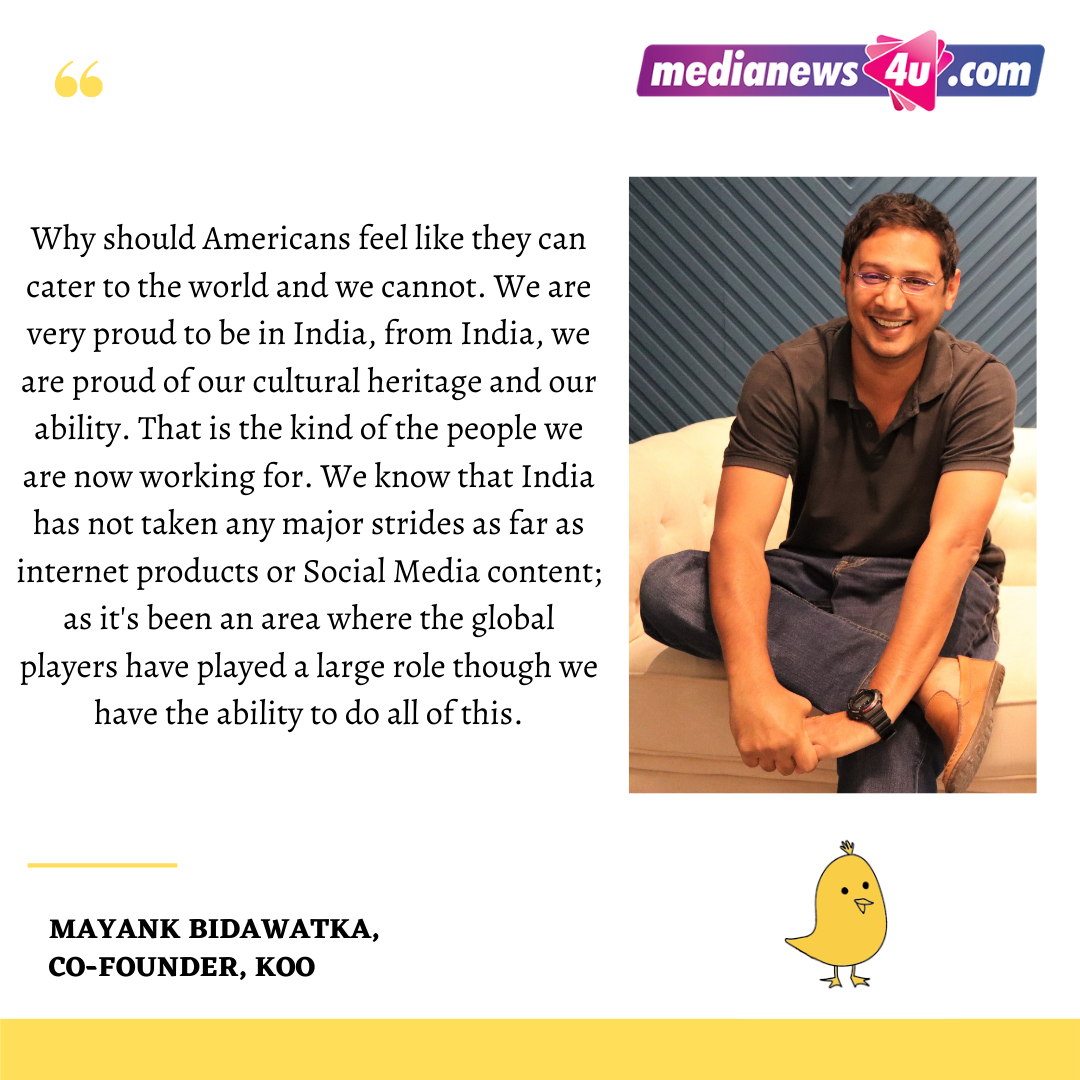
Arnab has an Indian channel that is global. We have been looking for Indian products that can create waves in Indian media. It was in this context Arnab about Koo and endorsed us as a new entrant in the social media platform which is truly Indian and where people can connect with families in their language.
We are also a very young company; some of these companies like Twitter have been in existence for about 15 years, for a small company like ours which had less than 40 people to create something similar to what a 15-year-old company did with 4000 employees, is quite a feat. It takes a lot of time to get the product right. We have had our moments of, we could have done this better, this should have been working better, etc., etc. But if I look back and think about it we need a much larger team to build technology like this; these are very complex things that we are actually building. One is the interface we are building and the engineering that goes behind this is that we are building. There are billions of connections, if you have 1 million users who are connecting with thousand people that are equal to billion connections. The engineering required to make a lot of these things happen takes its own time. We see that we have certain bases on the app which is far from perfect, which is what is beautiful because when we become perfect this will be better than most of the products which people are using in this world. We are really making India proud of what we have done and we are already moving in that direction of innovation. We are sure that we can beat the global players in their game; we just need some more time to get the right team in place. When the world sees us they will realize that we Indians have great talent and ability to make global products.
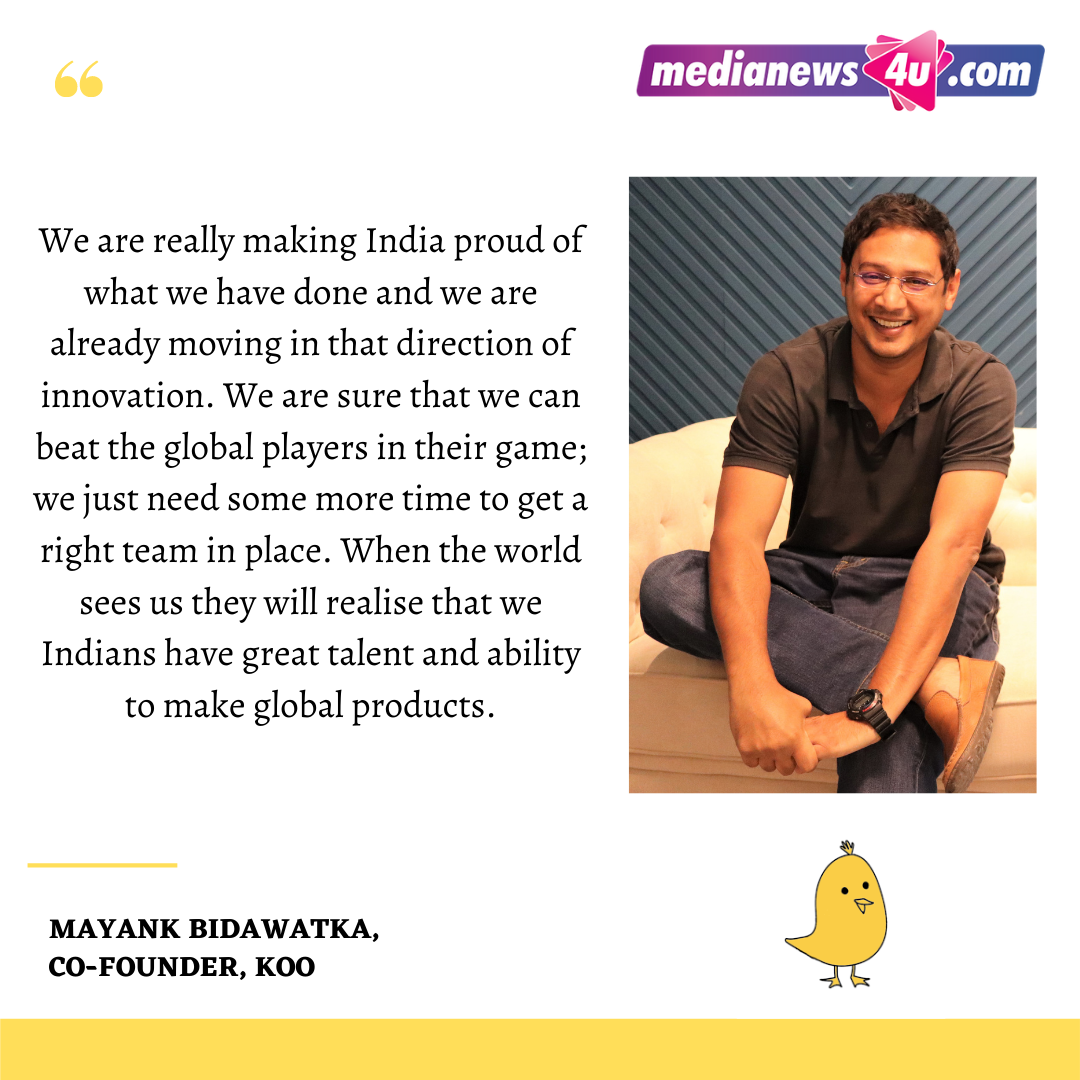
What are the challenges Koo facing in terms of being competitive to Twitter?
We all have to admit that Twitter is a great company and product, but definitely, there is a gap, i.e. Indian languages in India which they don’t cater to. Koo is a better product when it comes to dealing with Indians and the many languages. Yes, we still need to take care of things on the product and engineering side. That is a universal problem; technical glitches are part and parcel of any platform. Improvement is a moving target for every company; we will improve much faster than anybody else. Secondly, because of our expertise and insights in Indian languages, we have a head start as compared to Twitter. We are going to go much much deeper in the Indian languages and work is in progress. Twitter is good for Indians who think in English and want a global reach, we are an App for Indians who are aspirational and want to connect with India.
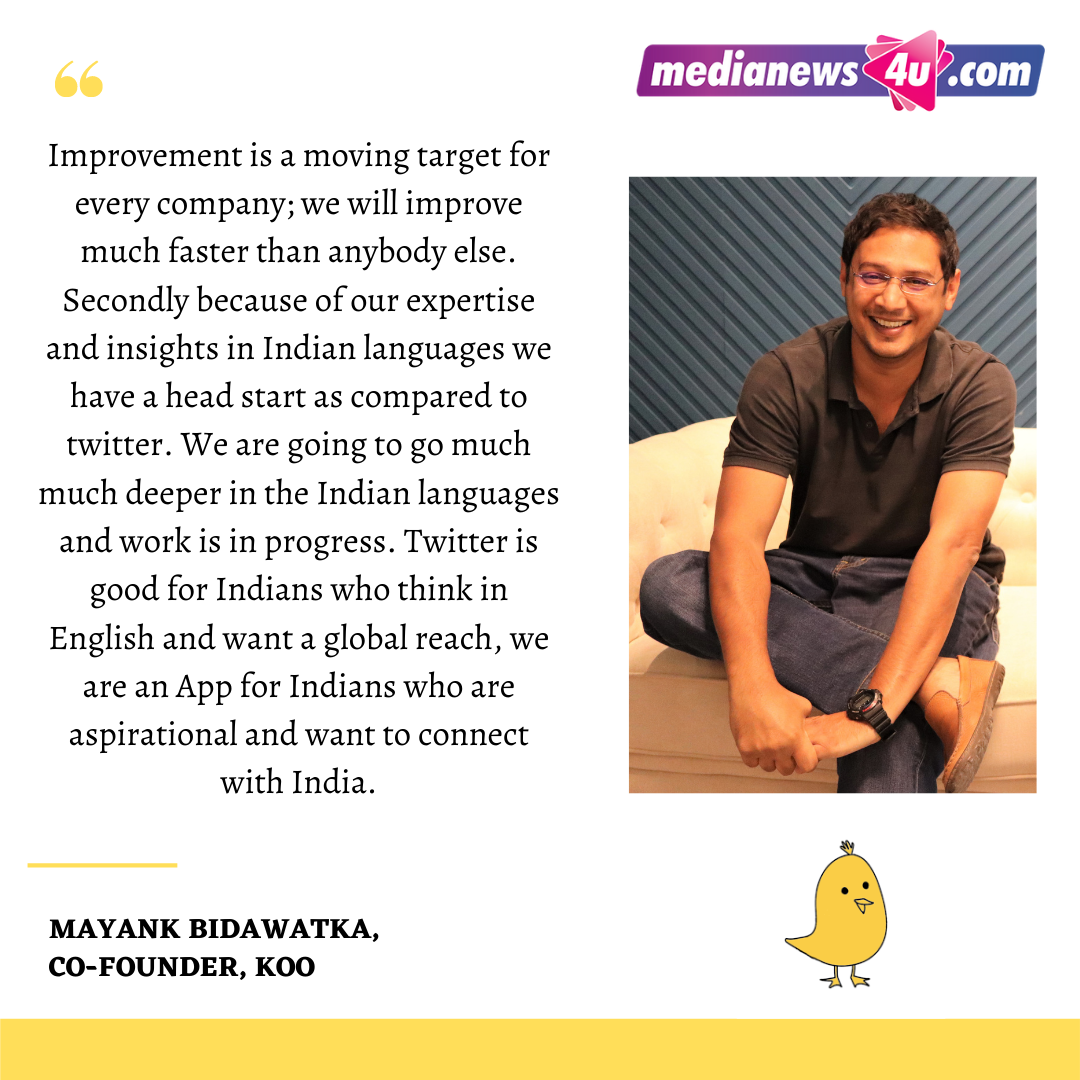
The new Voice feature on Koo. How is this going to help you to reach out more and more in this subcontinent?
Voice is very important in India, we have grown up using the internet on our desktop or laptop with keyboard if we talk about the vernacular medium, there are people who have never used the keyboard, so for them, it is very natural to talk then to use the keyboard so that has to be remembered and hence you will see that even on Google 40% of searches from India are in voice. So, it is very important to build voice-related features into the product; you can record your voice in any of the Indian languages and create a Koo. This feature is not relevant on Twitter yet, you can only record in DM.
What is your marketing strategy to promote Koo?
One is that the kind of users that we have, majority of them are not even on Twitter there are less than 10% of Twitter users in our country, a large part of our growth comes from non-twitter users, secondly, there are a lot of people keep sharing content which is created on Koo and to people who are from another network as well, that sharing helps our growth and we are growing every day. For us it has been word-of-mouth publicity and channels like Republic, NewsX, and Network18 who are putting our logo and talking about us and asking people to connect to the ongoing debate using the KOO App. We have 6 million users on KOO and want to get to 100 million users.
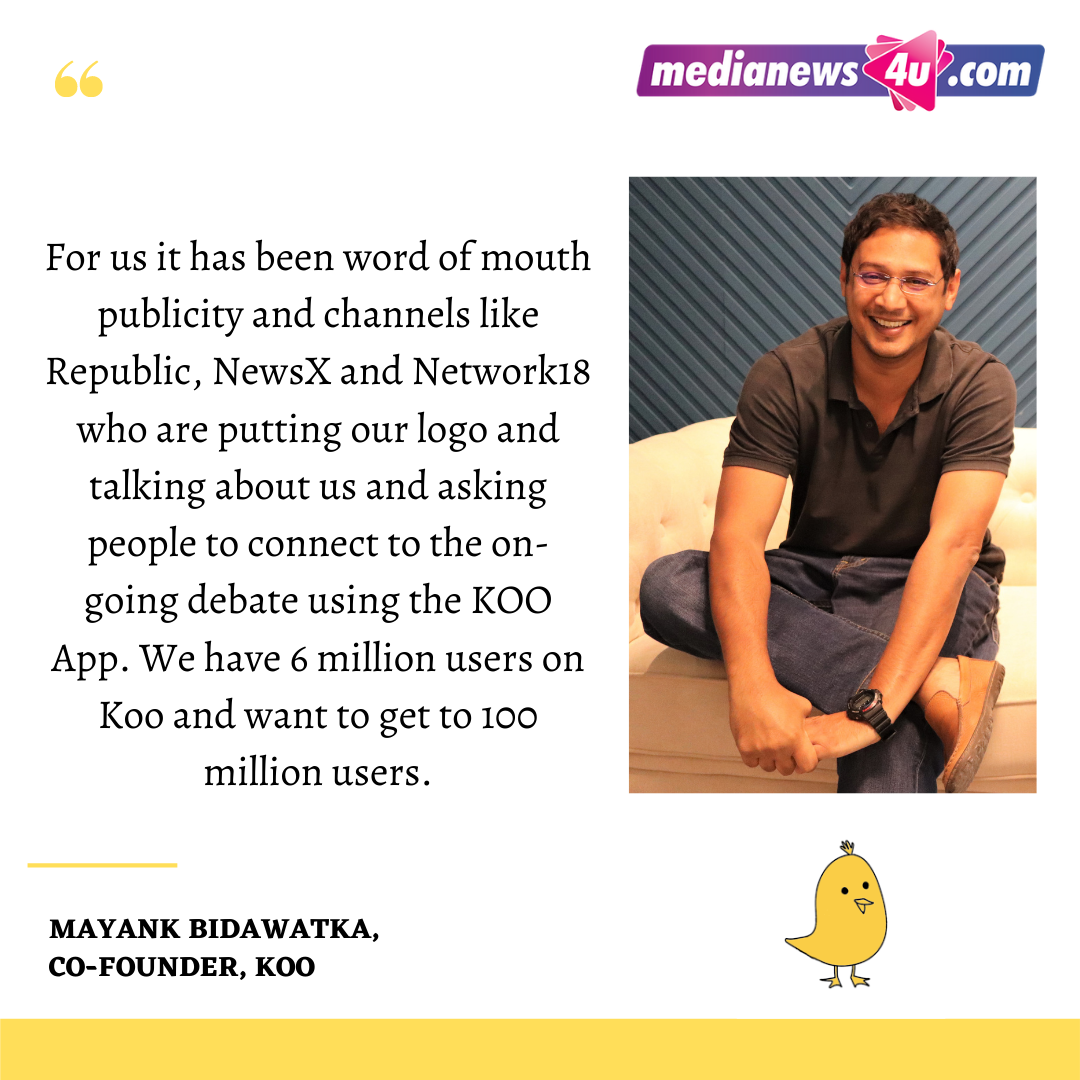
What is your revenue model for Koo?
We aze a mix of multiple interactions between users, creators, brands, and influencers. Each of these interactions will become a way to generate revenue, as these can be monetized in a very innovative way.
How do you feel like an Indian that putting out a microblogging site? What is your personal thought on this?
If you look at our evolution as a country, we were a very rich country we were ruled and made into a colony. Today as an important member of the world if I look at the mindset of the country it is important for us to work towards becoming a World Power. How did large countries become a world power? They created assets that in turn gave returns for a few generations. What does that mean? Firstly they became self-reliant, secondly, when a country is self-reliant the world starts giving you the money. That’s when the country becomes large and strong and then becomes a world power. Does India have the ability, people, and intent? Yes, we have to be self – reliant and that doesn’t mean you stop using other products but you start creating competency so that dependence on others stops, which is the most important step. I completely chime with the government to move toward being self–reliant, not asking you to stop using other products but to build competitive products in India.
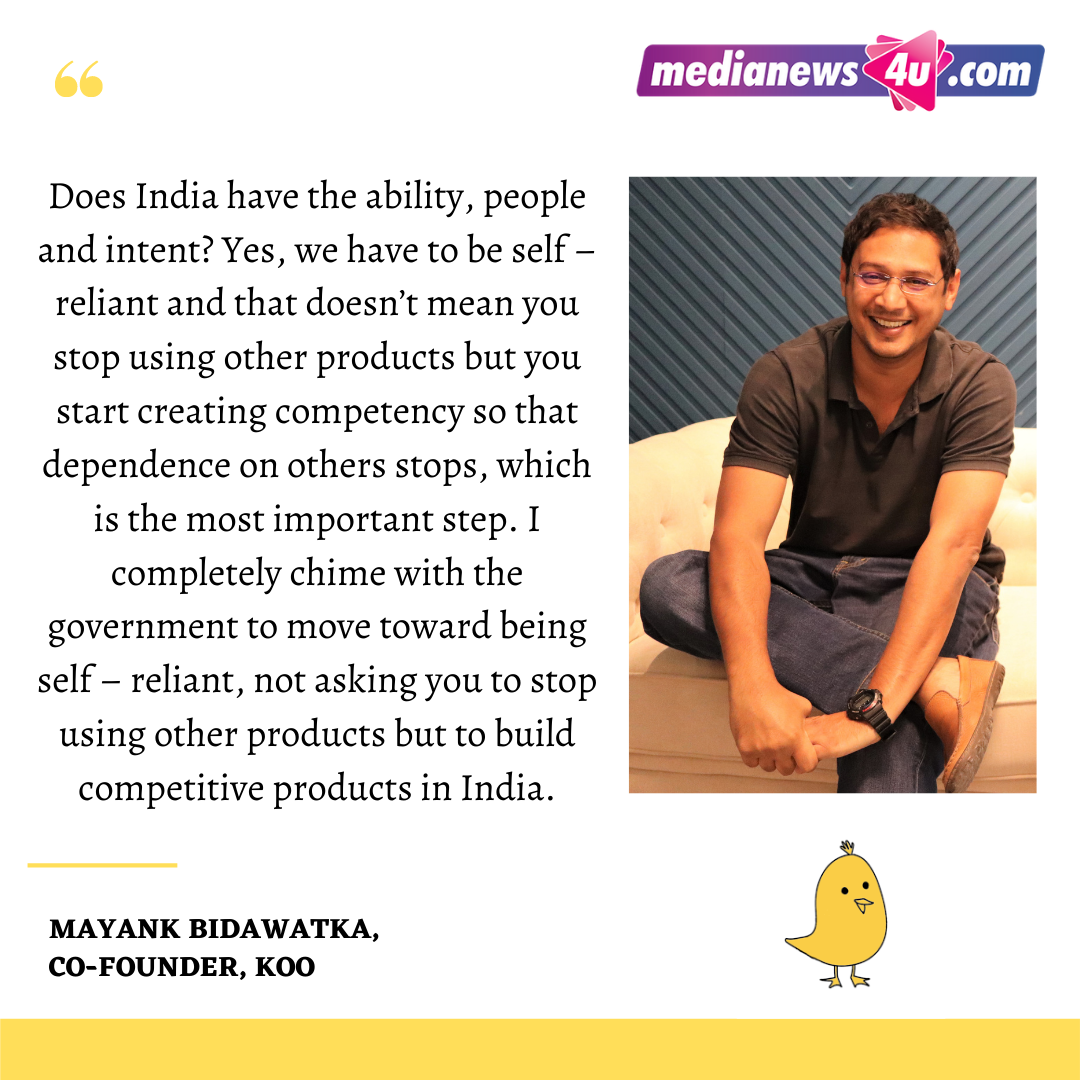
Where do you see yourself in the next 3 years? Where do you see Koo?
We want Koo to be the world’s largest social media platform because our population is massive. There is a massive aspirational India that wants to do well and we are giving them a platform and the ability to connect with people they want to connect with and we are enabling it. Koo should be visualized like a room full of people, imagine it’s the largest room in India and it’s packed with people from all over the country. You will see that our country is nothing but the United States of India. There is so much diversity in our country, and how do you unite the country. Can you make them communicate with each other even when there is a language divide, can you bring everyone together in one room? For example, the agriculture minister should be able to connect with all farmers in multiple Indian languages and the farmer should be able to understand what he is saying irrespective of the language he speaks. That is what Koo does, connecting people to each other irrespective of their culture and languages. It is a large project and hoping to make it impactful and relevant to the country.


